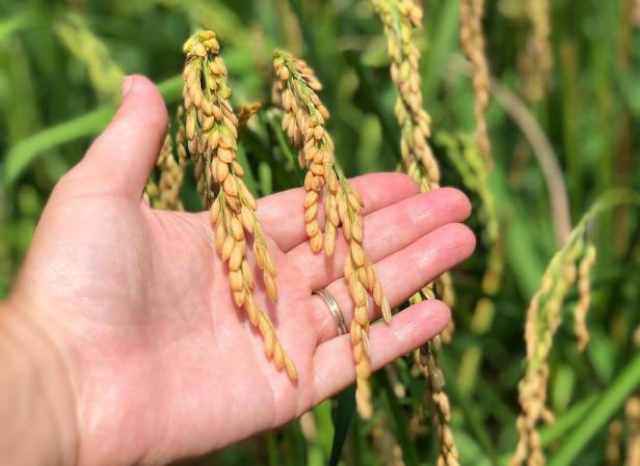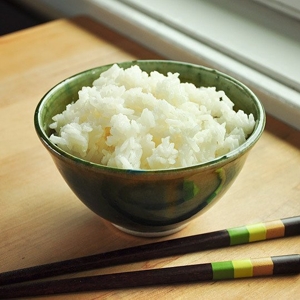The idea of growing food as-you-go on long-term space trips has been fundamental to Science Fiction, and lately to real science. And space travel upstart China has become first to make real inroads into the problems of growing plants without gravity…
 Rice ready to harvest: Successfully growing it in space is a first step toward developing
Rice ready to harvest: Successfully growing it in space is a first step toward developing
a sustainable fresh food supply for long-term human space voyages…
‘You can’t take it with you…’
Well, you can, but not enough. We’re referring to fresh foods, and foods that can be recycled. That is, foods that can be perpetuated by replanting cuttings or the seeds one generation produces to produce the next. The theme has been revisited many times in science fiction tales over the past century. It’s also become a leading challenge in the collective effort to produce a workable plan to populate the Moon and visit Mars. Not to mention, to enable far-future journeys to the stars.
Not by concentrates and supplements alone
There’s an old Biblical saying: “Man [Humanity] cannot live by bread alone.” It’s from Deuteronomy, and refers to nurturing one’s Christian faith on ‘every word that proceedeth out of the mouth of God.” But it has come in modern times to represent a sort of fundamental commandment to follow a varied and balanced diet to enjoy a full and healthy life.
More to the point, for the future of long tern space exploration, it has become a warning not to count on what amounts to ultra-processed foods for ‘total nourishment’.
The most recent emergence of the theme was in the 2015 movie The Martian, based on a 2011 novel by Andy Weir. In it, a NASA astronaut, played by Matt Damon, is marooned on Mars and has to learn to grow potatoes in Martian soil enriched with his own poop to survive.
Along with avoiding the dangers of long-term exposure to potentially deadly radiation beyond Earth’s protective magnetic fields, providing proper, sustainable food for crew members has become a central challenge.
A few ‘cheats’
The Martian was lauded by the scientific community as a realistic depiction of growing food in space. Even so, the movie had to indulge in a few little ‘cheats’ to make the process work. How do you get plants (let alone animals) that have evolved over hundreds of thousands or millions of years on one plant to adapt to another that’s smaller ( has weaker gravity), gets less sunlight, has a different spin rate (day length) and a different length of year, and different seasons? Not to mention different coil composition and water availability?
On a space vessel, the issues are fewer but different. You can control all the variables (except for gravity, unless you take extreme measures to replicate it). But until now, even simple plants have been unable to develop properly in an environment in which they can’t tell whether their roots and stems are up or down.
Inscrutable problem solving
None of us really wants to get into internecine scientific and engineering discussions. Let’s simply say that Chinese researchers claim to have made a breakthrough that has resulted in their successfully growing rice plants full-cycle from seed to flower on their new space station. Their achievement is outlined in a recent edition of Interesting Engineering.
The next step would appear to be to learn how to grow complementary legumes that, combined with rice, could provide a complete nutritional protein for humans. Or, perhaps, to extend the know-how learned from the rice research to create a quinoa or other plant that produces a complete protein all on its own.
One way or another, it’s a major step toward realizing the dream of long-term, long distance space voyaging…
~ Maggie J.

